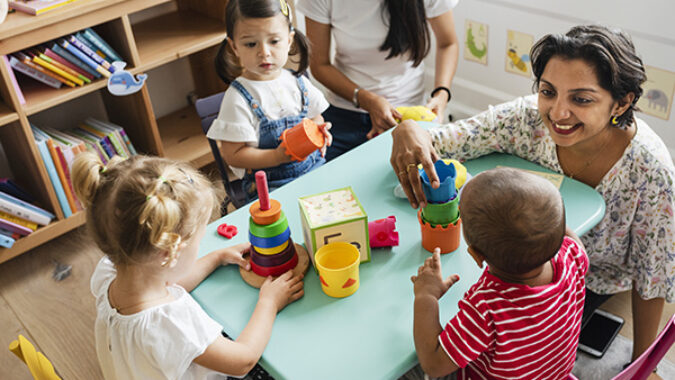The Murphy administration on Wednesday said it was taking steps, long sought by NJBIA, that will align the differing classroom square footage requirements used by various state agencies for preschools and childcare centers into a single standard.
The move bolsters the state’s “mixed delivery model” by addressing one of the most frequently cited barriers faced by local education and childcare officials as communities across New Jersey look to establish or expand state-funded preschool and childcare programs. Mixed delivery refers to serving 3-and 4-year-old children in classroom settings that meet all state regulations, and are operated by a combination of school districts, Head Start programs, and private providers.
“Removing this, and other, barriers for licensed childcare providers to participate in preschool expansion efforts is an efficient use of our state’s resources and existing childcare provider infrastructure,” said NJBIA Vice President of Government Affairs Althea D. Ford, who discussed the challenges facing the state's preschool expansion efforts on last weekend's broadcast of NJBIA's "Minding Your Business" television show.
“A strong mixed delivery strategy will ensure that these job creators can continue to provide critical services not only to our infants, toddlers and preschoolers, but families with children of all ages who rely on their services,” she said.
Currently, state regulations for childcare facilities licensed by the Department of Children and Families (DCF) require 35 square feet of usable space per child. The Department of Education’s current standard requires a minimum of 950 square feet per classroom. This misalignment can limit opportunities for communities to partner with Head Start programs or private providers to offer preschool services.
Gov. Phil Murphy said the DOE and DCF have begun the process of amending their respective rules to hold state-funded and licensed childcare centers and preschool programs to the same minimum space requirement of 42 square feet of usable space per child. The administration intends to formally publish the rulemaking proposal for public comment in spring 2025.
The proposed rule change is backed by national research on best practices in classroom space per preschool child. The National Resource Center for Health and Safety in Child Care and Early Education and the American Academy of Pediatrics recommend preschool classroom square footage should range between 42 to 54 square feet per preschool child.
Murphy said changing the state’s square-footage requirements could open up thousands of classrooms in childcare centers to state-funded preschools.
“Our mixed delivery model has played a key role in our rapid expansion of preschool seats,” the governor said. “Aligning standards makes preschool expansion accessible across the early childcare industry, helps futureproof the state’s early childhood ecosystem, and represents another step we’re taking to keep New Jersey as the best place to raise a family.”
“We’ve listened to the calls of local school leaders, licensed providers, and Head Start administrators who have voiced that state regulations on classroom size are limiting in creating and expanding access to high-quality preschool programs,” said DOE Commissioner Kevin Dehmer. “Our goal is to work in partnership with local school officials to address these concerns head-on, helping them bring this valuable educational benefit to families in their communities.”
“At DCF, we recognize that New Jersey needs both a thriving childcare industry, and accessible, high-quality pre-K,” said DCF Commissioner Christine Norbut Beyer. “This plan allows comparable, research-based space requirements so that, whether your child is served by one of our state’s licensed childcare centers, or in a pre-K classroom, they’ll have the same room to grow and learn. It also respects existing childcare facilities by grandfathering them in at the space requirement that was in place when they became licensed.”
DOE’s amended square footage regulations will apply to school districts that received preschool education aid (PEA) in August 2017 or thereafter, and to all classrooms relocating to a space not previously occupied for use as a school or childcare facility.
PEA classrooms will still be held to a class size limit of 15 students. Schools will be able to use smaller rooms to serve fewer than 15 children per classroom, if they find it is advantageous to do so and if they still meet the 42 square foot per-child requirement.
The proposal will also allow PEA funding for preschool classrooms without toilet rooms, provided the toilet room is located on the same floor as the classroom, designated for use only by preschool students, and that the district provides direct supervision of preschool students. The Department’s revised standard will not include square footage requirements for storage, equipment, or furnishings that are built-in or not easily movable.
DCF’s amended regulations will increase the minimum indoor space requirements from 35 to 42 square feet of usable activity indoor floor space. Licensed childcare facilities that meet the existing 35-square-foot requirement will be grandfathered into the new regulation.




